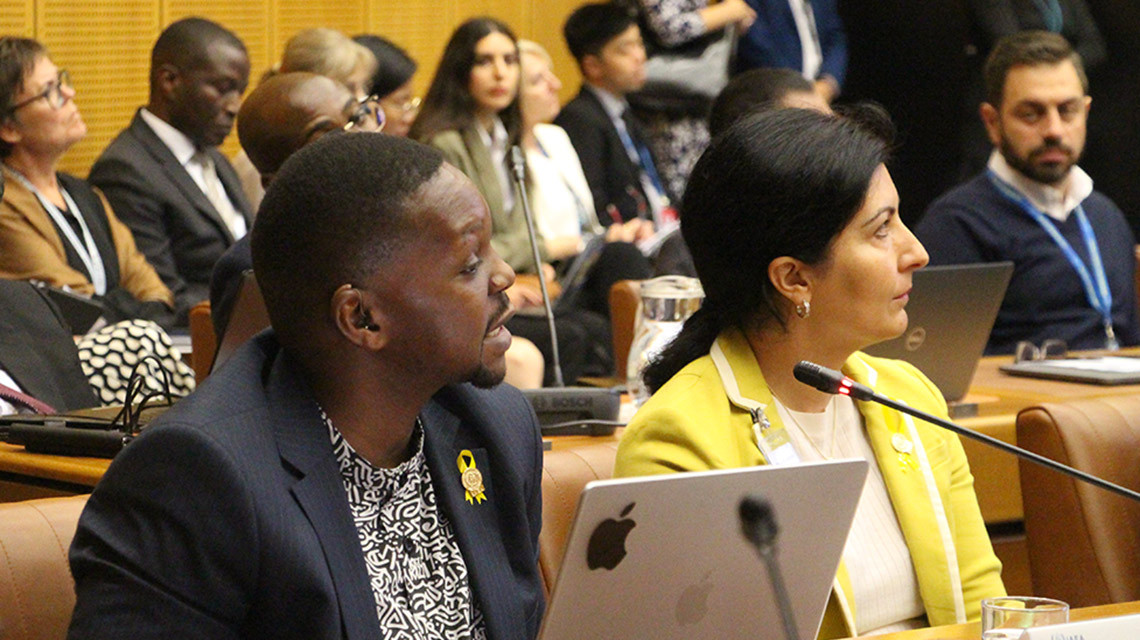Every year, an estimated 400 000 children worldwide develop cancer – only half of whom are ever diagnosed. Most of them live in low- and middle-income countries and, at best, 30 per cent will be cured. The needless suffering that these children endure is compounded by malnutrition, misdiagnoses, inaccessible treatments and a lack of specialized health professionals.
“The IAEA is working to remedy this reality and deliver the care that these children deserve,” said Najat Mokhtar, IAEA Deputy Director General and Head of the Department of Nuclear Sciences and Applications, in her opening remarks at a side event on the Battle against Childhood Cancer: Finding a Ray of Hope, during the 67th regular session of the IAEA General Conference. “The IAEA has leveraged scientific expertise, good will and opportunity throughout the entire continuum of care to strengthen the capacities of its Member States – giving them and their children a fighting chance against cancer,” she said.
Sidney Chahonyo’s story was a vivid reminder of what the IAEA’s efforts mean for patients like him around the globe. At age 19, just as he was about to start university, Chahonyo began experiencing headaches and nosebleeds. Their increasing frequency and intensity – along with the onset of hearing loss – prompted him to seek medical care. After six frustrating months of visits to numerous clinics and hospitals only to be misdiagnosed repeatedly, he finally received a diagnosis of nasopharyngeal carcinoma, a cancer affecting the tissues connecting the back of his nose to the back of his mouth. With this diagnosis, he immediately underwent treatment. Today, the 37-year-old cancer survivor advocates for change as the Executive Director of Hope for Cancer Kids, a non-profit organization dedicated to providing support, resources and hope to families affected by childhood cancer in Kenya. “What I want is for every child around the world to have the same chance I had to beat cancer,” Chahonyo said.







